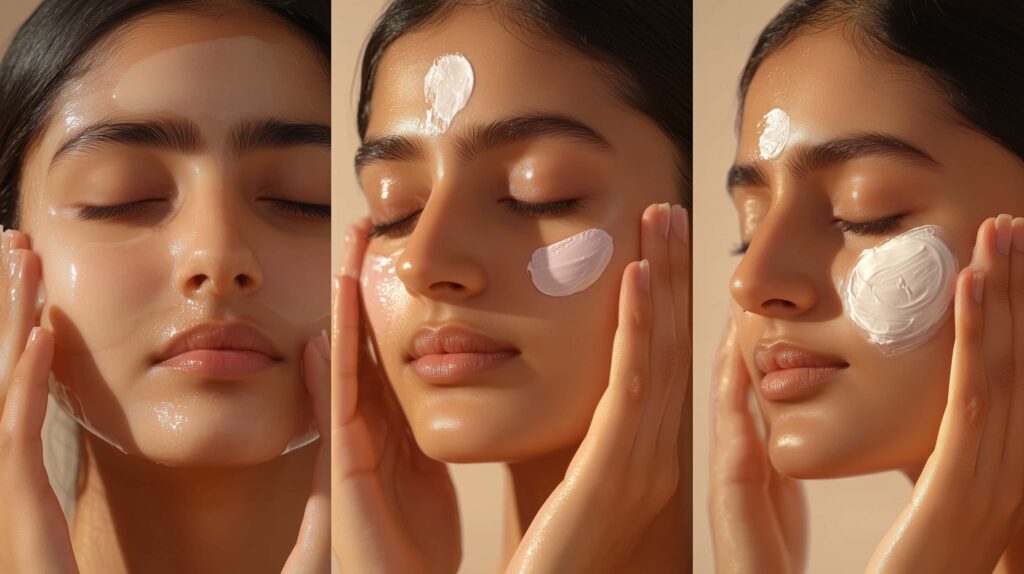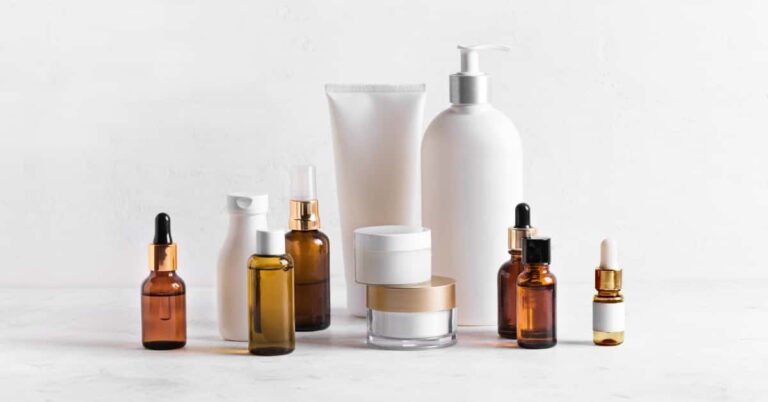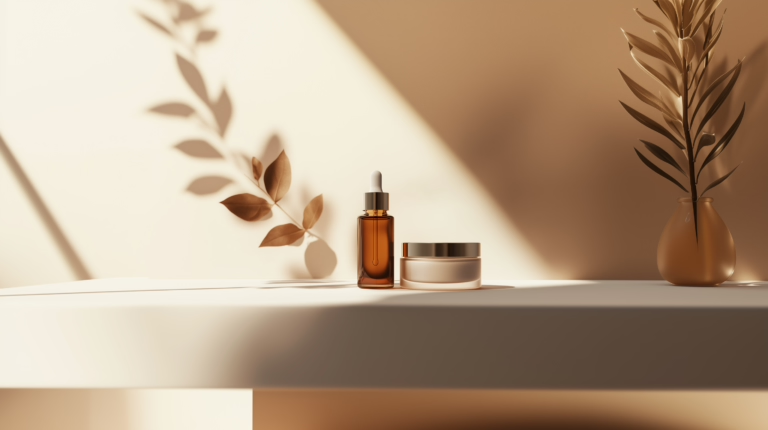Conquering Persistent Acne: Science-Backed Steps
Dealing with persistent acne can be both physically and emotionally challenging. Whether you’re battling stubborn breakouts or dealing with lingering scars, the impact on your confidence and daily life can be significant. However, understanding the science behind acne and implementing effective, science-backed strategies can help you achieve clearer, healthier skin. This guide provides actionable steps to conquer persistent acne, backed by scientific research and tailored to various skin types.
Understanding the Science Behind Persistent Acne

To effectively tackle persistent acne, it’s essential to understand its underlying causes. Acne is influenced by a combination of biological and environmental factors:
Hormonal Imbalances
Hormones play a crucial role in acne development. Androgens, which increase during puberty, can enlarge oil glands and boost sebum production. Even in adults, hormonal fluctuations from menstrual cycles, pregnancy, or conditions like polycystic ovary syndrome (PCOS) can trigger acne flare-ups.
Genetics
Your genetic makeup significantly influences your susceptibility to acne. If your parents had acne, you’re more likely to experience it too. Genetics determine factors like skin type, hormone levels, and the body’s inflammatory response, all contributing to acne development.
Bacterial Growth
Propionibacterium acnes (P. acnes) is a bacteria that naturally resides on your skin. When excess oil and dead skin cells clog your pores, P. acnes can proliferate, leading to inflammation and the formation of pimples, pustules, and cysts.
Lifestyle and Environmental Factors
Diet, stress, and environmental pollutants can exacerbate acne. High-glycemic diets and dairy products have been linked to increased acne severity. Stress triggers cortisol release, increasing oil production and inflammation. Additionally, exposure to pollutants can clog pores and irritate the skin.
Skincare Habits
Using the wrong skincare products or improper cleansing techniques can contribute to persistent acne. Harsh scrubbing, over-exfoliating, or using comedogenic (pore-clogging) products can worsen breakouts and prolong acne issues.
Understanding these factors is the first step in addressing persistent acne. By targeting the root causes, you can develop a more effective and personalized treatment plan.
Key Benefits of Science-Backed Acne Treatments

Choosing treatments backed by scientific research ensures that you’re using methods proven to be effective and safe. Here are the primary advantages of science-backed acne treatments:
Effectiveness
Scientific studies provide evidence on how specific treatments work to reduce acne. For instance, benzoyl peroxide kills P. acnes bacteria, while retinoids help unclog pores and promote cell turnover. Using treatments with proven efficacy increases the likelihood of achieving clear skin.
Safety
Products and treatments approved by dermatological research have undergone rigorous testing for safety. Understanding potential side effects and how to mitigate them ensures that you can treat acne without causing additional skin issues.
Long-Term Skin Health
Science-backed treatments not only address current acne but also help prevent future breakouts. Ingredients like salicylic acid exfoliate the skin and keep pores clear, reducing the chances of acne recurrence. Additionally, treatments that focus on skin barrier repair contribute to overall skin health and resilience.
Targeted Solutions
Scientific research allows for targeted treatments that address specific acne causes. Whether it’s hormonal imbalance, bacterial overgrowth, or excess oil production, there are specialized treatments designed to tackle each issue effectively.
Personalized Treatment Plans
Understanding the science behind acne allows for the creation of personalized treatment plans. By identifying the specific factors contributing to your acne, you can tailor your skincare routine to address those needs directly, enhancing the overall effectiveness of your efforts.
Embracing science-backed acne treatments provides a reliable foundation for managing and overcoming persistent acne, ensuring that your approach is both effective and safe.
Step-by-Step Guide to Implementing Your Acne Treatment Routine

Creating a consistent and effective skincare routine is crucial for conquering persistent acne. Here’s a streamlined guide to help you establish a routine that works for you:
Step 1: Cleansing
Morning and Evening Start and end your day by cleansing your face with a gentle, non-comedogenic cleanser. This removes excess oil, dirt, and impurities without stripping your skin of essential moisture. Look for cleansers containing salicylic acid or benzoyl peroxide for added acne-fighting benefits.
Step 2: Exfoliating
2-3 Times a Week Exfoliate your skin to remove dead skin cells that can clog pores. Use a chemical exfoliant like alpha hydroxy acids (AHAs) or beta hydroxy acids (BHAs) instead of physical scrubs, which can irritate the skin. Apply the exfoliant after cleansing to allow it to penetrate and clear your pores effectively.
Step 3: Treating
Daily Apply targeted treatments based on your acne type. For inflammatory acne, consider using products with benzoyl peroxide or niacinamide to reduce redness and swelling. For comedonal acne, retinoids can help prevent clogged pores and promote cell turnover. Ensure you apply treatments to clean, dry skin for maximum absorption.
Step 4: Moisturizing
Morning and Evening Even if you have oily skin, moisturizing is essential to maintain your skin barrier. Choose a lightweight, non-comedogenic moisturizer that hydrates without adding excess oil. Ingredients like hyaluronic acid are excellent for providing moisture without clogging pores.
Step 5: Sun Protection
Morning Apply a broad-spectrum sunscreen with at least SPF 30 every morning, even if you’re indoors. Sun exposure can worsen acne scars and cause hyperpigmentation. Opt for oil-free, non-comedogenic formulas to protect your skin without contributing to breakouts.
Step 6: Nighttime Care
Evening Incorporate additional nighttime treatments if needed. This can include using a heavier moisturizer or applying specific treatments like retinoids to enhance their effectiveness. Ensure your nighttime routine focuses on repairing and nourishing your skin while you sleep.
Step 7: Consistency is Key
Maintain consistency in your routine to allow treatments to work effectively. Skipping steps or using products sporadically can hinder your progress and prolong acne issues. Stick to your routine, even when you don’t see immediate results, as consistency leads to long-term improvements.
By following these steps, you can establish a comprehensive skincare routine that addresses persistent acne effectively. Remember to introduce new products gradually to monitor how your skin reacts and adjust your routine as needed.
Practical Tips for Maintaining Consistency and Maximizing Results

Sticking to a skincare routine can be challenging, especially when results aren’t immediate. Here are practical tips to help you maintain consistency and achieve the best possible results:
Set Reminders
Use your phone or a skincare app to set reminders for your morning and evening routines. Consistent timing helps make skincare a habit, reducing the likelihood of skipping steps.
Track Your Progress
Keep a skincare journal or use an app to document your progress. Note changes in your skin, how you feel after using certain products, and any side effects. Tracking helps you stay motivated and provides valuable insights into what works best for your skin.
Gradual Introduction of Products
Introduce new products one at a time, allowing your skin to adjust and minimizing the risk of irritation. Start with the essential steps and gradually add treatments as your skin becomes accustomed to your routine.
Simplify Your Routine
Avoid overwhelming yourself with too many products. Focus on the core steps—cleansing, treating, moisturizing, and sun protection—and add additional treatments as needed. A simplified routine is easier to maintain consistently.
Stay Patient
Understand that clear skin takes time. It can take several weeks to months to see significant improvements, so be patient and persistent. Avoid switching products too frequently, as this can disrupt your skin’s balance and delay results.
Address Setbacks Positively
Encountering a breakout or irritation can be discouraging, but it’s important to stay positive. Analyze what might have caused the setback—such as a new product or environmental change—and adjust your routine accordingly. Remember that setbacks are a normal part of the healing process.
By implementing these tips, you can maintain a consistent skincare routine, overcome challenges, and maximize the effectiveness of your acne treatments. Consistency and dedication are key to achieving and sustaining clear, healthy skin.
Addressing Common Concerns and Mistakes in Acne Treatment

When dealing with persistent acne, it’s easy to fall into common pitfalls that can hinder your progress. Here are some frequent concerns and mistakes, along with guidance on how to avoid them:
Overusing Products
Concern: Using too many products or applying them too frequently can irritate the skin and worsen acne. Solution: Stick to a simple routine with essential products. Introduce new treatments gradually and follow recommended usage instructions. Overloading your skin can disrupt its natural balance and lead to increased breakouts.
Neglecting Sunscreen
Concern: Skincare treatments, especially those with retinoids or exfoliants, can make your skin more sensitive to the sun.
Solution: Always apply a broad-spectrum sunscreen in the morning. Sunscreen protects your skin from UV damage, prevents hyperpigmentation, and maintains the effectiveness of your acne treatments.
Inconsistent Routine
Concern: Irregularly following your skincare routine can delay results and make it harder to achieve clear skin.
Solution: Develop a consistent routine and stick to it. Consistency allows treatments to work effectively and helps maintain your skin’s balance. Use reminders or integrate skincare into your daily habits to ensure regularity.
Picking or Popping Pimples
Concern: Squeezing or picking at pimples can lead to scarring, infection, and prolonged healing times.
Solution: Resist the urge to pick or pop pimples. Instead, use spot treatments with ingredients like benzoyl peroxide or salicylic acid to target blemishes safely. Keeping your hands away from your face reduces the risk of introducing bacteria and causing further irritation.
Switching Treatments Too Quickly
Concern: Switching products frequently in search of quick results can prevent your skin from adjusting and reacting to treatments.
Solution: Allow enough time for products to work before making changes. Most treatments take several weeks to show results. If a product isn’t working after consistent use, consult a dermatologist before trying something new.
Using Harsh Ingredients
Concern: Harsh scrubs, astringents, and alcohol-based products can strip the skin of its natural oils, causing dryness and irritation.
Solution: Opt for gentle, non-comedogenic products that cleanse without stripping moisture. Look for ingredients like hyaluronic acid and ceramides that support the skin’s barrier while addressing acne.
By being aware of these common concerns and mistakes, you can navigate your acne treatment journey more effectively. Avoiding these pitfalls ensures that your efforts lead to meaningful and lasting improvements in your skin.
Ensuring Treatments are Suitable for Your Skin Type

Selecting the right treatments for your specific skin type is crucial for effectively managing persistent acne. Here’s how to ensure your acne treatments align with your skin’s unique needs:
Identifying Your Skin Type
Understanding your skin type—whether oily, dry, combination, or sensitive—helps in choosing the appropriate products and treatments. Here’s a quick guide:
- Oily Skin: Shiny appearance, enlarged pores, prone to breakouts.
- Dry Skin: Flaky, rough texture, tightness, and possible redness.
- Combination Skin: Oily in the T-zone (forehead, nose, chin) and dry or normal on other areas.
- Sensitive Skin: Prone to redness, irritation, and reactions to products.
Tailoring Your Routine
Customize your skincare routine based on your skin type to maximize effectiveness and minimize irritation.
- Oily Skin: Use lightweight, oil-free, non-comedogenic products. Incorporate ingredients like salicylic acid to control oil and prevent clogged pores.
- Dry Skin: Choose hydrating, non-comedogenic moisturizers with ingredients like hyaluronic acid and ceramides. Avoid harsh cleansers that strip moisture.
- Combination Skin: Use products that balance oil production without over-drying. Consider multi-phase moisturizers or spot treatments for oily areas.
- Sensitive Skin: Opt for gentle, fragrance-free products. Ingredients like niacinamide can soothe irritation while treating acne.
Selecting Suitable Ingredients
Certain ingredients are more beneficial for specific skin types:
- For Oily and Acne-Prone Skin: Benzoyl peroxide, salicylic acid, and niacinamide help reduce oil and treat breakouts.
- For Dry Skin: Hyaluronic acid and ceramides provide essential hydration and support the skin barrier.
- For Sensitive Skin: Soothing ingredients like aloe vera, chamomile, and niacinamide can reduce inflammation without causing irritation.
Patch Testing New Products
Before incorporating a new product into your routine, perform a patch test. Apply a small amount to a discreet area, such as behind your ear or on your wrist, and wait 24 hours to check for any adverse reactions. Patch testing helps prevent widespread irritation or allergic reactions.
Consulting a Dermatologist
If you’re unsure about which products are best for your skin type, consult a dermatologist. They can provide personalized recommendations based on your skin’s specific needs and acne severity. Professional advice ensures that you’re using the most effective and safe treatments for your skin.
By ensuring that your acne treatments are suitable for your skin type, you enhance their effectiveness and maintain overall skin health. Personalized skincare leads to better results and a more comfortable, confident you.
Final Thoughts and Encouragement to Start Your Acne-Fighting Journey

Conquering persistent acne is a journey that requires patience, consistency, and the right approach. By understanding the science behind acne, choosing science-backed treatments, and tailoring your routine to your skin type, you’re well-equipped to achieve clearer, healthier skin.
Embrace the Process
Remember that achieving clear skin is a gradual process. Celebrate each small improvement and stay committed to your routine, even when progress seems slow. Your dedication will pay off over time, leading to lasting results.
Stay Informed and Adaptable
Keep learning about skincare and stay open to adjusting your routine as needed. The skincare landscape is continually evolving, and staying informed ensures that you’re using the best available methods to treat your acne.
Seek Support
Don’t hesitate to reach out for support from skincare communities or professionals. Sharing your experiences and seeking advice can provide motivation and valuable insights, making your journey less solitary and more manageable.
Believe in Your Ability to Improve
Believe in your ability to improve your skin health. With the right knowledge, tools, and mindset, you can overcome persistent acne and enjoy the confidence that comes with clear, radiant skin.
Take the First Step Today
Ready to take control of your acne? Start by implementing the science-backed steps outlined in this guide. Develop a consistent routine, choose the right products for your skin type, and stay patient and persistent. Your journey to clear skin begins with the first step—embrace it with confidence and optimism.







